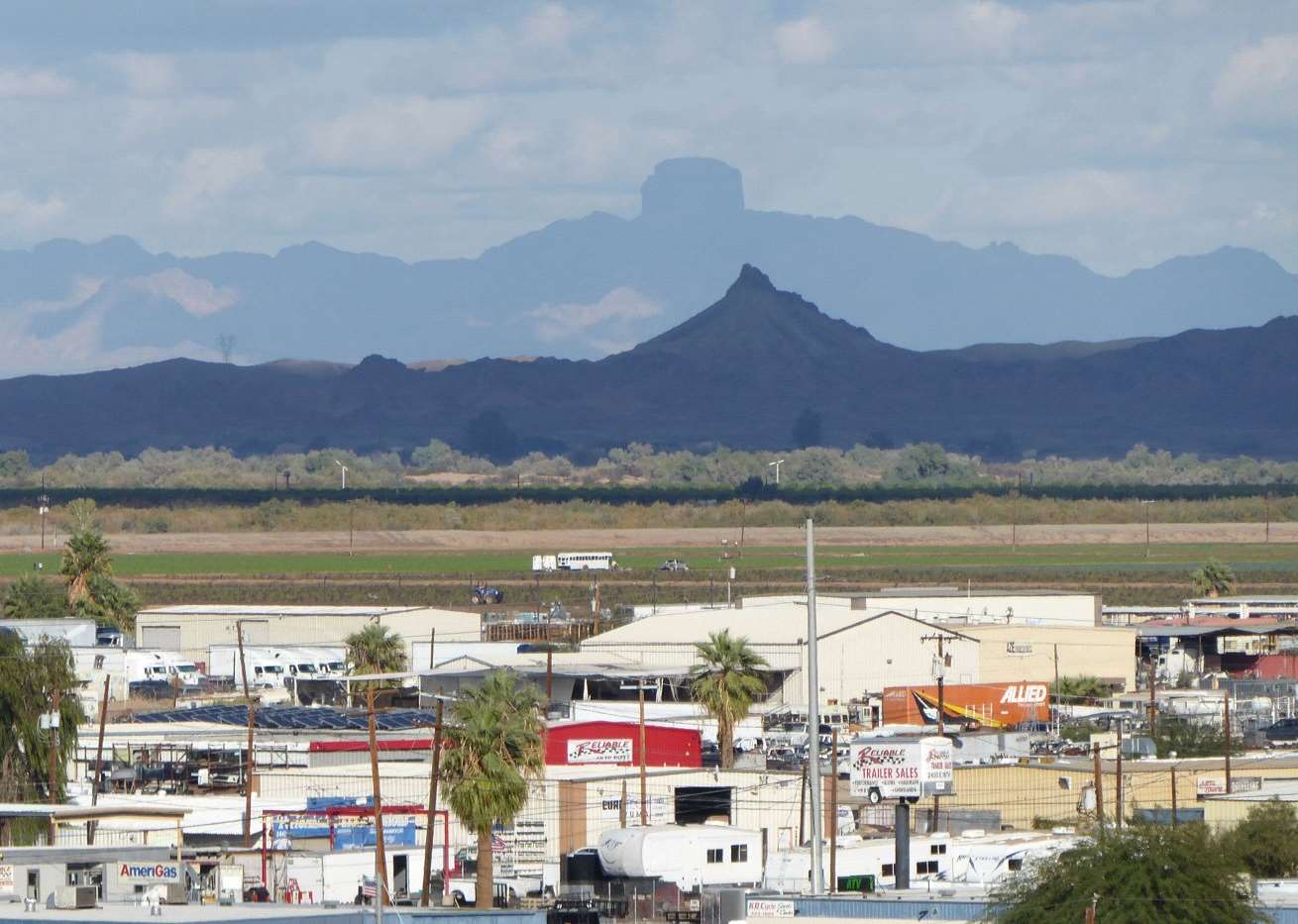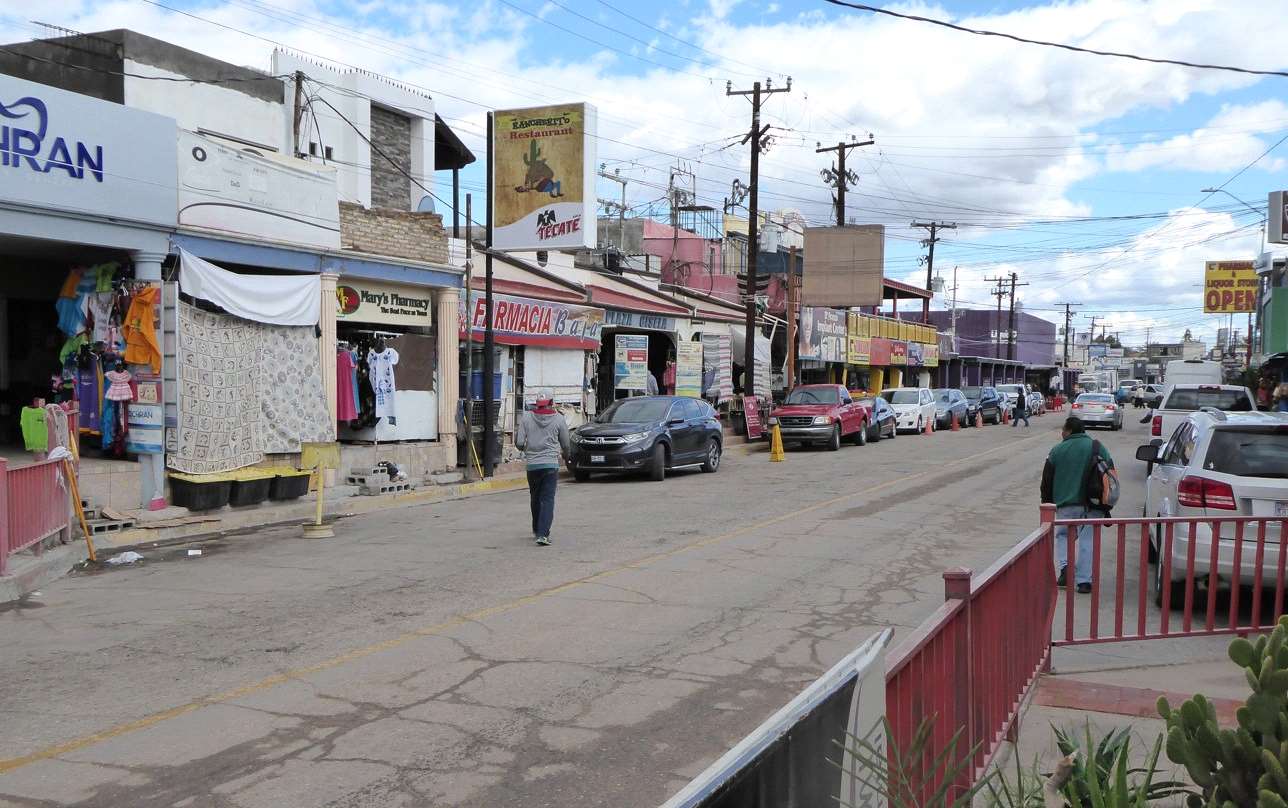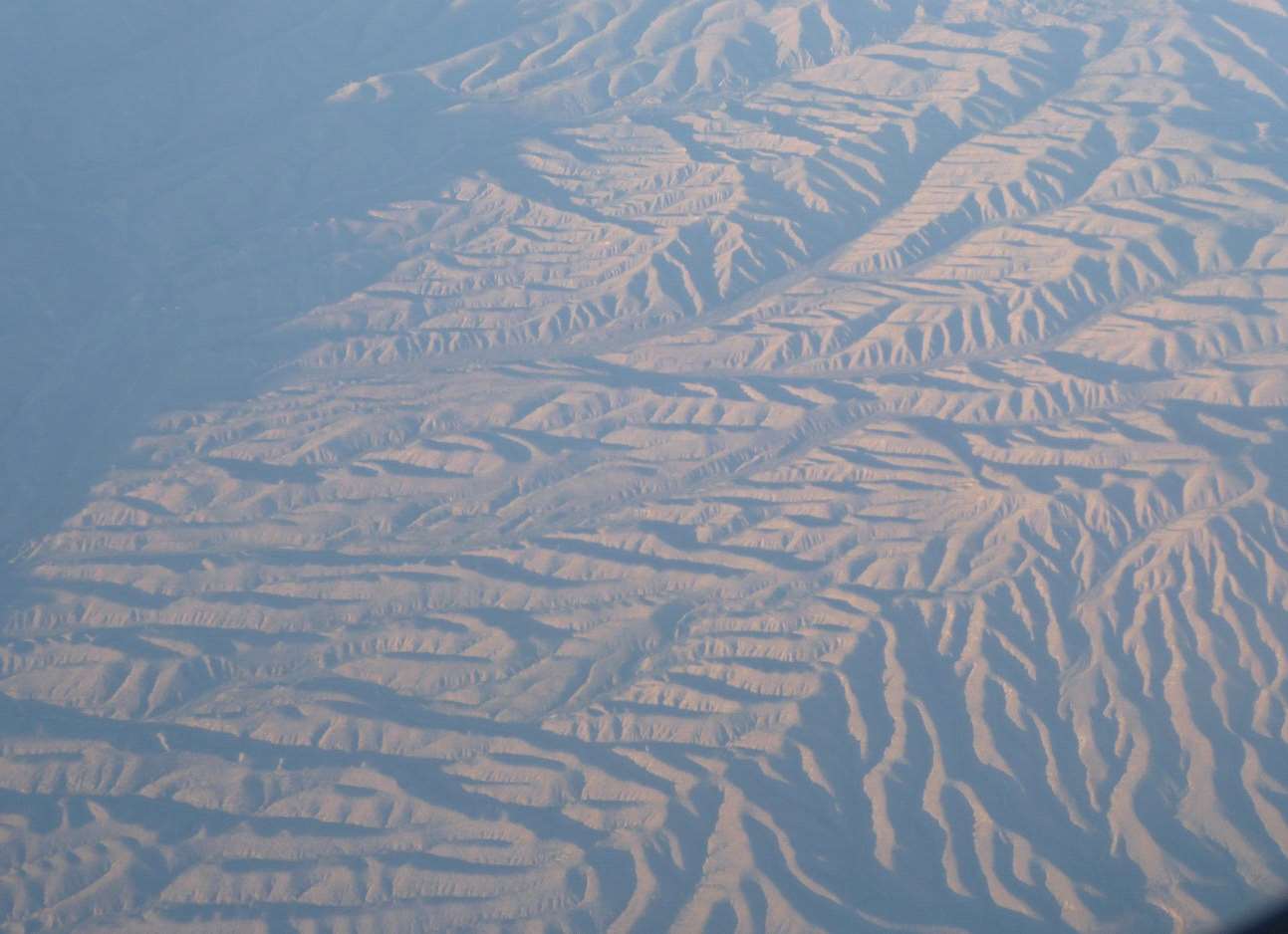California
Poking Around in Yuma
by Craig Mains
Poking Around in Yuma
by Craig Mains
When Chain-Wen was working at the Customs and Border Patrol facility in Yuma, AZ, Corbin and I flew out to visit her for the week of Thanksgiving 2019. Flying in one could see how arid the area around Yuma was. It is considered to be the driest populated place in the contiguous US. The average annual rainfall is 3.36 inches. In 2007 Yuma received only 0.15 inches of rain.
Shown above is a Google Earth satellite view of the Yuma area. The urban part of Yuma is in the center of the image. Despite being in a desert, the city is surrounded by agriculture. It is at the confluence of the Gila and Colorado Rivers, which supply irrigation water. Sunshine is abundant and crops can be grown year round. More than 175 different crops are said to be grown in the Yuma area but it is most well-known for lettuce. More than 90 percent of the winter-grown lettuce sold in the US is grown around Yuma.
It's estimated that each year 80,000 to 90,000 people come to Yuma from Canada and the northern tier of the US to spend the winter. This means Yuma's population nearly doubles during the winter months. Since we happened to be there for the week of Thanksgiving we were there for the first wave of the snowbirds. It felt like being in Morgantown when the WVU students return in the fall---except for the age difference.
A view of some of the agricultural fields outside of Yuma. Yuma is an urban area, surrounded by irrigated agriculture, surrounded by desert.
In the foreground is some of the car-centric urban landscape of Yuma. In the middle are some of the agricultural fields. The white school bus in the center is almost certainly to haul ag workers to the fields. In the background is some desert landscape. The peak on the far horizon is Castle Dome in the Castle Dome Mountains northeast of Yuma. It has an elevation of 3776 feet. The early Spanish explorers called it Cabeza de Gigante, or Giant's Head.
While Yuma had its assets (sunshine and food!), it was not a city that was very conducive to walking around. The streets were wide and straight; there weren't many intersections with walk/wait signals; and people drove fast. Crossing one of the main thoroughfares on foot was an act of bravery. It seemed like a city where if you wanted to go somewhere you were expected to do it in a car
One day, out of curiosity, we went to the nearby Mexican town of Los Algodones for lunch. We thought it might be a tourist town and were surprised that it was set up mainly to provide services to the many older snowbirds who spend the winter in Yuma and Winterhaven, CA. We usually think of Mexico as being south of Arizona, but, in this cases, Los Algodones was west of Yuma, just on the other side of the Colorado River. We had to go through the southeast corner of California to get there. We parked on the California side and walked across the border.
Los Algodones means "the cotton plants" in Spanish, borrowed from Arabic. However, the name is thought to be a corruption of an Indian name for the area. Since the name sounded similar to the Spanish word it was changed to the Spanish word.
Los Algodones is known for having many pharmacies, dentists, plastic surgeons, and optometrists. Reportedly, there are more than 350 dentists in a four square block area, giving rise to the nickname of Molar City. This fellow was selling trinkets to visitors who were waiting outside for their appointments. There were also numerous men who were paid to walk around trying to direct visitors to whatever services they might be looking for. I found it a little depressing to be approached multiple times and asked "Dentures? Eye Glasses? Plastic Surgery? Viagra?" I know I fit the target demographic but I didn't necessarily want to be reminded of it every few minutes. Most services are reportedly 40 to 60 percent cheaper than what one would pay in the US or Canada.
We mainly just went over to look around and have lunch. This is El Paisa restaurant where we had a tasty, inexpensive lunch.
On the way back we were questioned by Customs, who wanted to know what we had brought back. Although we weren't searched, they were a little surprised when we told them we weren't bringing anything. And, that we hadn't been there for a dentist or eye doctor appointment. It seemed like they couldn't understand why anyone would go over otherwise. I suspect the guy who questioned me may have suspected that I was too embarrassed to admit that I went over for Viagra, or something like that.
Flying out of Phoenix at the end of the week in the early evening, the landscape was lit at an oblique angle that highlighted the topography very nicely.
A view of some cinder cones from the plane window at twilight. I believe this is probably part of the San Francisco Volcanic Field north of Flagstaff. There are about 600 former volcanoes in the 1800-square-mile area, ranging in age from more than 6 million years old to less than 1000 years old. It is believed that they were formed as the North American tectonic plate moved over a geologic hotspot. As the plate moves over the hotspot new volcanoes are formed. On average, a new volcano is formed about every several thousand years. The youngest volcanoes are on the eastern side of the field.
Most of the volcanoes in the field are cinder cones such as those in the photo. They are formed from ash and scoria ejected from the volcanic eruption. Scoria is a volcanic rock that is ejected as a molten blob and cools and solidifies after being ejected. They are relatively light-weight for a rock due to being rather porous because of dissolved gases that are present, which form pores or vesicles. Cinder cones usually have a bowl-shaped crater at the summit such as those shown.
December 2019










